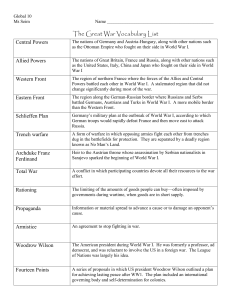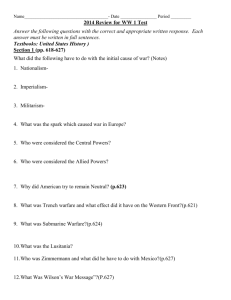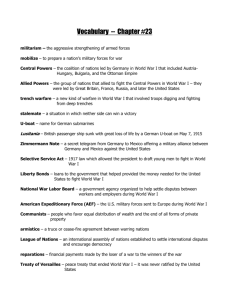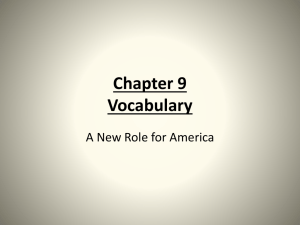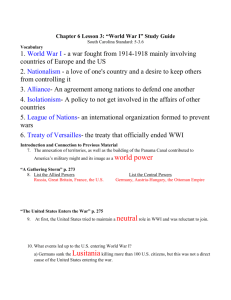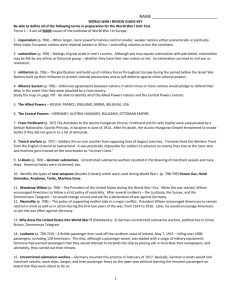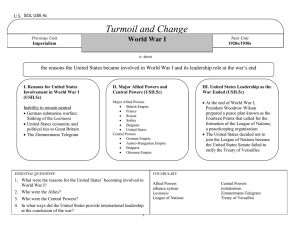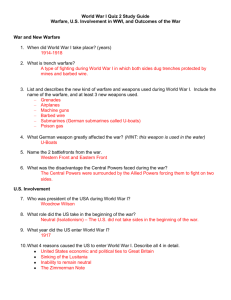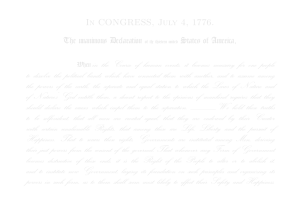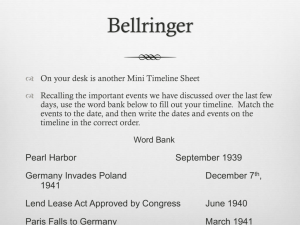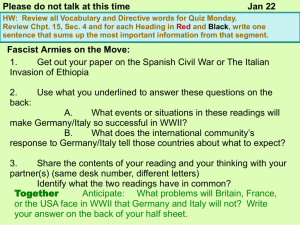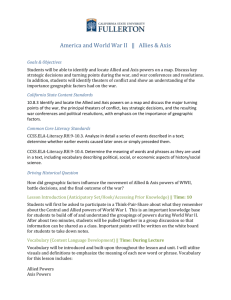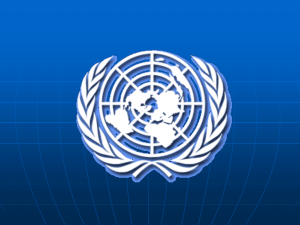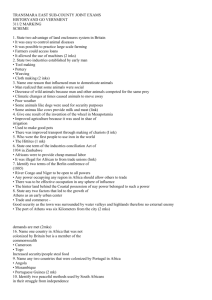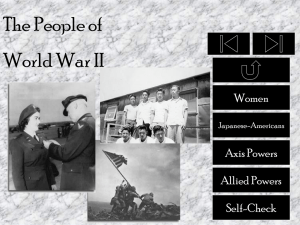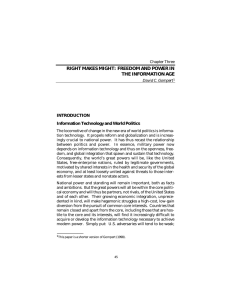vocab - New Paltz Central School District
advertisement
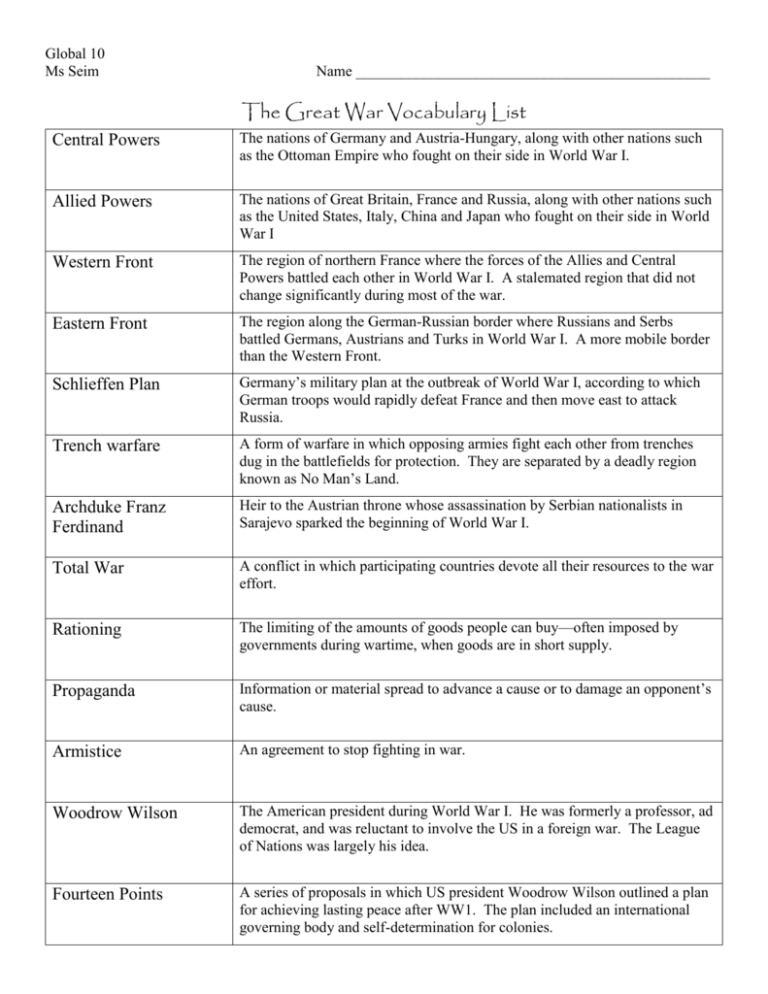
Global 10 Ms Seim Name _______________________________________________ The Great War Vocabulary List Central Powers The nations of Germany and Austria-Hungary, along with other nations such as the Ottoman Empire who fought on their side in World War I. Allied Powers The nations of Great Britain, France and Russia, along with other nations such as the United States, Italy, China and Japan who fought on their side in World War I Western Front The region of northern France where the forces of the Allies and Central Powers battled each other in World War I. A stalemated region that did not change significantly during most of the war. Eastern Front The region along the German-Russian border where Russians and Serbs battled Germans, Austrians and Turks in World War I. A more mobile border than the Western Front. Schlieffen Plan Germany’s military plan at the outbreak of World War I, according to which German troops would rapidly defeat France and then move east to attack Russia. Trench warfare A form of warfare in which opposing armies fight each other from trenches dug in the battlefields for protection. They are separated by a deadly region known as No Man’s Land. Archduke Franz Ferdinand Heir to the Austrian throne whose assassination by Serbian nationalists in Sarajevo sparked the beginning of World War I. Total War A conflict in which participating countries devote all their resources to the war effort. Rationing The limiting of the amounts of goods people can buy—often imposed by governments during wartime, when goods are in short supply. Propaganda Information or material spread to advance a cause or to damage an opponent’s cause. Armistice An agreement to stop fighting in war. Woodrow Wilson The American president during World War I. He was formerly a professor, ad democrat, and was reluctant to involve the US in a foreign war. The League of Nations was largely his idea. Fourteen Points A series of proposals in which US president Woodrow Wilson outlined a plan for achieving lasting peace after WW1. The plan included an international governing body and self-determination for colonies. Self-determination The freedom of a people to decide under what form of government they wish to live. Treaty of Versailles The peace treaty signed by Germany and the Allied powers after WWI. It blamed Germany for the war, demanded Germany pay war reparations, gave Germany’s colonies to France and Britain, and created the League of Nations. League of Nations An international association formed after World War I with the goal of keeping peace among nations. Lusitania A British ship sunk by German u-boats in World War I. Many American citizens were on board and the attack helped sway American public opinion toward joining the war. Zimmerman note A message in which Germany promises to help Mexico regain land in the Southern US in exchange for Mexico’s alliance with Germany. (The message was probably not genuine)
